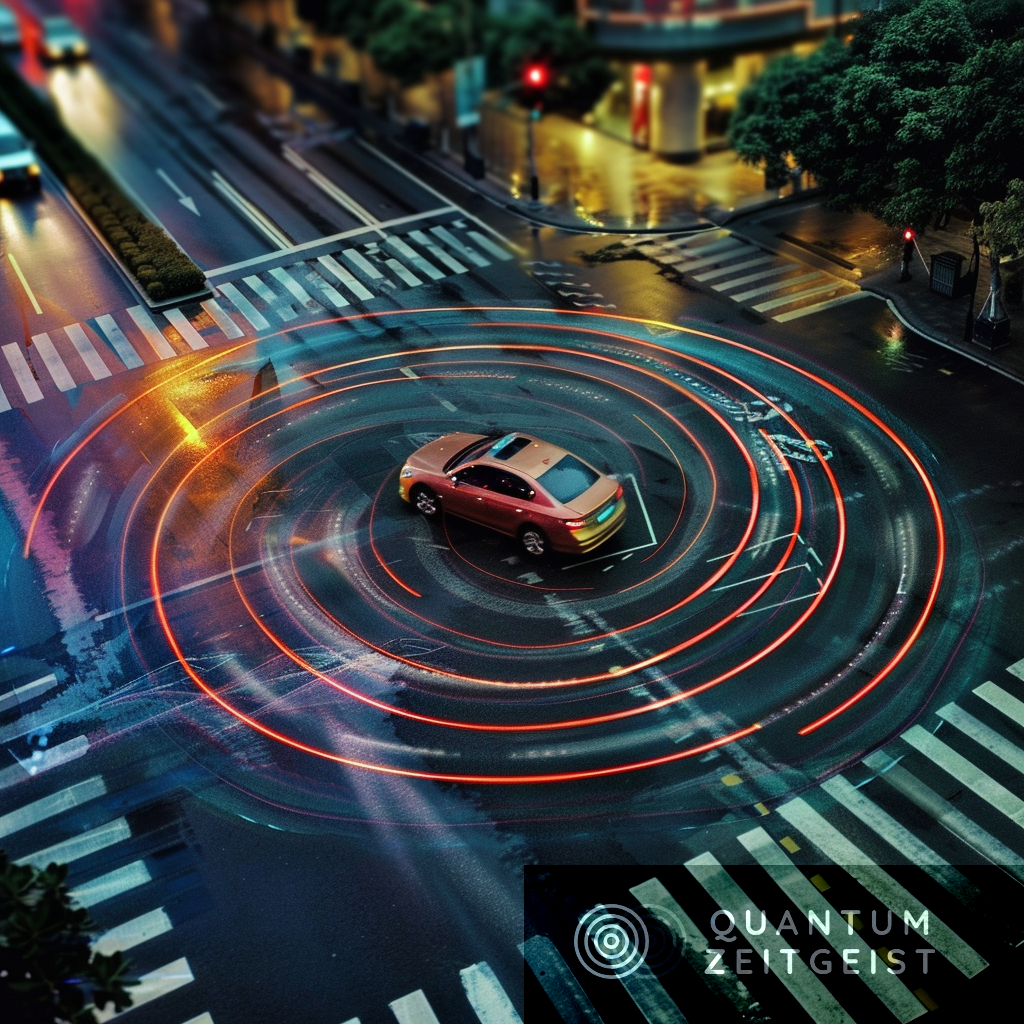Researchers from various universities have developed the Post-Quantum Lattice-Based Forward-Secure Authentication Scheme to enhance the security of 5G-assisted vehicular networks. The scheme aims to support quantum resistance and forward security in vehicular communications, addressing key disclosure vulnerabilities in conventional group signature systems. It uses matrix modular exponentiation and matrix transpose operations for message signature verification. The scheme is part of a broader effort to improve traffic efficiency and safety, and incorporates fog computing to handle large amounts of data. The researchers claim it sets a new standard for data security in 5G-assisted vehicular fog computing.
What is the Post-Quantum Lattice-Based Forward-Secure Authentication Scheme?
The Post-Quantum Lattice-Based Forward-Secure Authentication Scheme is a proposed solution to enhance the security of 5G-assisted vehicular networks. This scheme was developed by a team of researchers from various universities including the University of Hail, Iraq University College, Imam Abdulrahman Bin Faisal University, Lebanese American University, University of Tabuk, and Taibah University. The scheme aims to support quantum resistance and satisfy forward security in 5G-assisted vehicular communications.
The scheme is designed to efficiently update and generate new secret keys using the group signature for each period. It addresses the key disclosure vulnerabilities present in various conventional group signature systems by lowering forward security to short integer solution (SIS) hardness. The proposed scheme uses a matrix modular exponentiation and matrix transpose operations for message signature verification.
The researchers propose this scheme in response to the extensive use of vehicle networks made possible by fifth-generation (5G) technology in intelligent transportation. They note that there are significant information security risks with the system because all messages sent between vehicles are broadcast according to the public environment.
How Does the Scheme Improve Traffic Efficiency and Safety?
The Post-Quantum Lattice-Based Forward-Secure Authentication Scheme is part of a broader effort to enhance traffic efficiency and safety in response to the rise in vehicle ownership. The researchers note that there has been a lot of research done to aid passengers and drivers. The 5G-assisted vehicle network is one area of interest for both industry and academia.
Onboard units (OBUs) are wireless devices installed in intelligent vehicles to relay traffic information to other vehicles. This information includes details about the roads, traffic time, speed, direction, etc. The researchers argue that the optimum solution and improved traffic data awareness for vehicles can be obtained through the 5G-assisted vehicular network.
What Role Does Fog Computing Play in the Scheme?
Fog computing is a key component of the Post-Quantum Lattice-Based Forward-Secure Authentication Scheme. The researchers note that when dealing with a large amount of data, the limits of current cloud computing solutions become obvious. Fog computing, also known as edge computing, is gaining popularity and adoption due to its suitability for latency-sensitive applications such as the Industrial Internet of Things (IoT).
Moving some common cloud services to the fog node of the network can result in benefits such as enhanced offloading, decreased latency, and so on. However, because of the nature of a public environment, messages are constantly being broadcast, making them susceptible to a wide range of privacy and security threats. The researchers argue that these privacy and security issues must be fixed before a potential 5G-enabled vehicle network can be deployed.
How Does the Scheme Address Authentication in 5G-Assisted Vehicular Networks?
Authentication of messages is a current area of focus for research into 5G-assisted vehicular networks. The researchers note that to verify the identities of those who use motor vehicles, several researchers employ group signatures predicated on assumptions from number theory. However, the classical group signature can be broken by quantum computers, even when the potential drawbacks of secret key disclosure are disregarded.
The researchers propose the Post-Quantum Lattice-Based Forward-Secure Authentication Scheme as a solution to these issues. They argue that their research sets a new standard for data security in 5G-assisted vehicular fog computing. They claim that it is the first group signature-based solution that is both quantum-resistant and satisfied with forward security.
What are the Implications of the Scheme for the Future of Vehicular Networks?
The Post-Quantum Lattice-Based Forward-Secure Authentication Scheme has significant implications for the future of vehicular networks. The researchers argue that their scheme sets a new standard for data security in 5G-assisted vehicular fog computing. They claim that it is the first group signature-based solution that is both quantum-resistant and satisfied with forward security.
The researchers’ work suggests that the scheme could play a crucial role in the development and deployment of 5G-assisted vehicular networks. By addressing key vulnerabilities in conventional group signature systems and providing a solution that is quantum-resistant and satisfied with forward security, the scheme could significantly enhance the security and efficiency of these networks.
However, the researchers also note that there are still many challenges to be addressed. They argue that privacy and security issues must be fixed before a potential 5G-enabled vehicle network can be deployed. This suggests that while the Post-Quantum Lattice-Based Forward-Secure Authentication Scheme is a significant step forward, further research and development will be needed to fully realize the potential of 5G-assisted vehicular networks.
Publication details: “Post-Quantum Lattice-Based Forward-Secure Authentication Scheme Using Fog Computing in 5G-Assisted Vehicular Networks”
Publication Date: 2024-03-08
Authors: Zeyad Ghaleb Al-Mekhlafi, Mahmood A. Al-Shareeda, Badiea Abdulkarem Mohammed, Abeer Abdullah Alsadhan, et al.
Source: Research Square (Research Square)
DOI: https://doi.org/10.21203/rs.3.rs-3978206/v1

